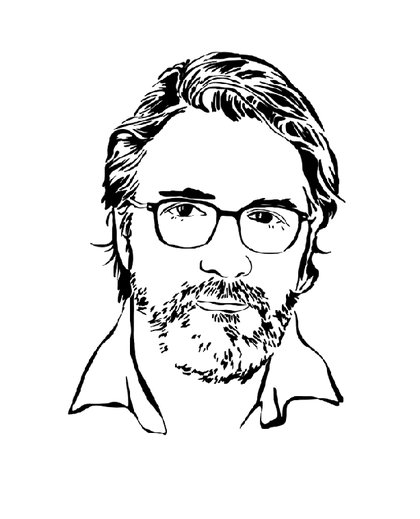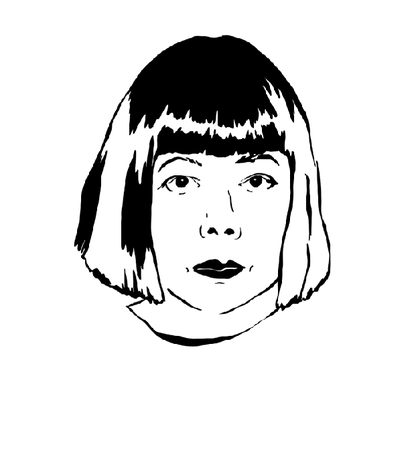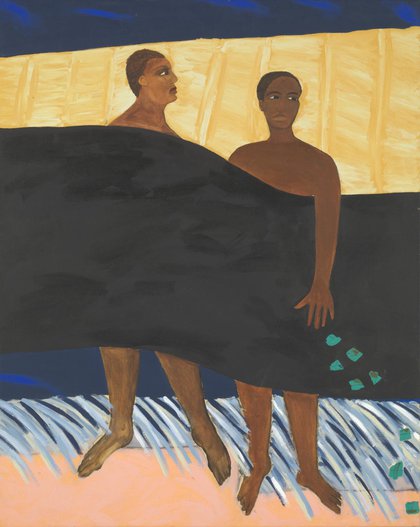
Lubaina Himid CBE RA
Ankledeep (1991)
Tate
© Lubaina Himid, courtesy the artist and Hollybush Gardens, London
In 2017, Lubaina Himid won the Turner Prize, the biggest art award in the UK. It followed more than 30 years of bold and witty work that puts people of African descent at the centre of our shared cultural history, which they’ve often been left out of.
From larger-than-life cut-out characters that fill entire rooms, to ceramic tableware that tells untold stories about the slave trade, Himid’s work is finally getting the attention it deserves.
For the Yes, but why? article series we teamed up with WePresent to tell the stories of Himid and four other game-changing artists. Here we chose three artworks from the article to give you some insight into her world.
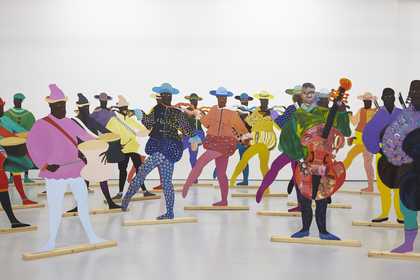
Lubaina Himid
Naming the Money, 2004
Installation view, ‘Navigation Charts’, 2017
© Spike Island, Bristol
Photo: Stuart Whipps. Courtesy the artist, Hollybush Gardens, and National Museums, Liverpool.
1. She wants artists of colour to be taken seriously
Take The Carrot Piece. This work, Himid explains, is about how cultural institutions want to be seen to integrate people of colour into their programmes, without seriously engaging with their work or the issues it raises.
We as Black women understood how we were being patronised, to be cajoled and distracted by silly games and pointless offers. We understood, but we knew what sustained us… and what we really needed to make a positive cultural contribution: self-belief, inherited wisdom, education and love.
Lubaina Himid
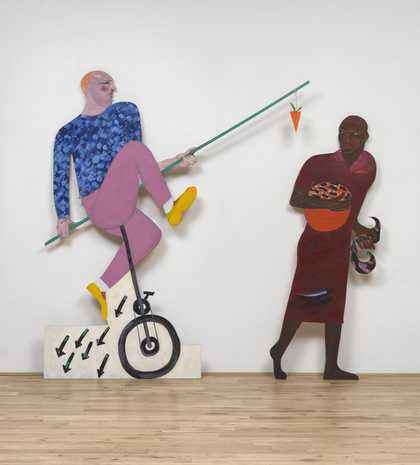
Lubaina Himid CBE RA
The Carrot Piece (1985)
Tate
© Lubaina Himid, courtesy the artist and Hollybush Gardens, London
2. She studied theatre design which shapes the way she works
As a trained stage designer, it’s no surprise that Himid’s work feels theatrical. In her paintings she likes to use bold, rich acrylic colours for her characters, who often wear intricately textured or patterned clothes.
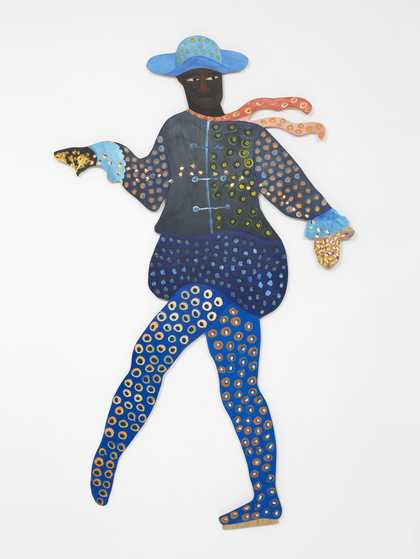
Lubaina Himid
Naming the Money (detail), 2004
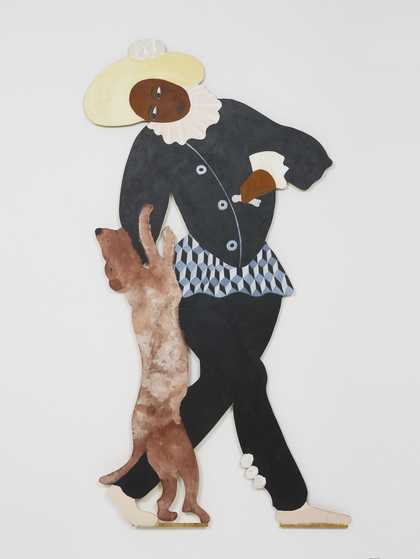
Lubaina Himid
Naming the Money (detail), 2004
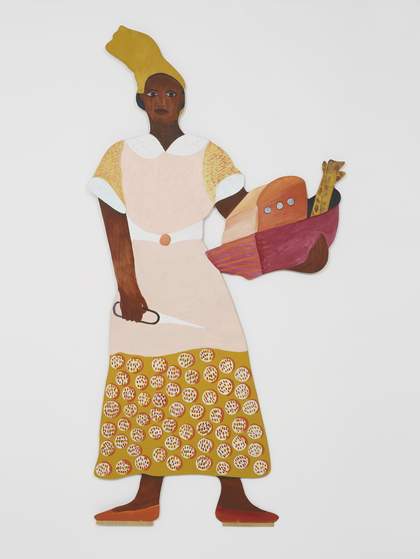
Lubaina Himid
Naming the Money (detail), 2004
Her mother was a textile designer, and she spent a lot of her childhood thinking about fabric... Throughout her practice there's a real attention to what people are wearing... the clothing is extraordinary. For example in Naming the Money they're all very well dressed in a particular, historic style of clothing. Sometimes you don't quite know where they're from... whether they're from the past or the future...
Laura Castagnini
3. She is influenced by and reacts to art history
As a child, Himid frequently visited art galleries and museums. Her work has been in conversation with art history throughout her career, as seen here in A Fashionable Marriage.
London in the 1980s in the midst of the hedonistic, greedy, self-serving, go-getting opportunistic mayhem was a fabulous location for me as a satirist and wit. Everyone who shook or moved in artistic semi-circles or political whirlpools was a deserving dartboard. I took aim and threw. Hogarth...proved to be the perfect ally.
Lubaina Himid

Lubaina Himid
A Fashionable Marriage, (detail) 1986
Installation view © The Place is Here © 2017 Nottingham Contemporary
Photo: Andy Keate. Courtesy the artist and Hollybush Gardens.
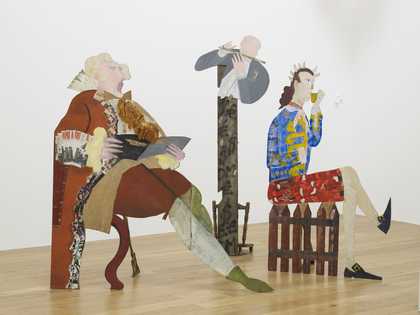
Lubaina Himid
A Fashionable Marriage, (detail) 1986
Installation view, © The Place is Here © 2017 Nottingham Contemporary
Photo: Andy Keate. Courtesy the artist and Hollybush Gardens.
This is based on an interview between Maisie Skidmore and Tate curator, Laura Castagnini for story-telling site WePresent.

